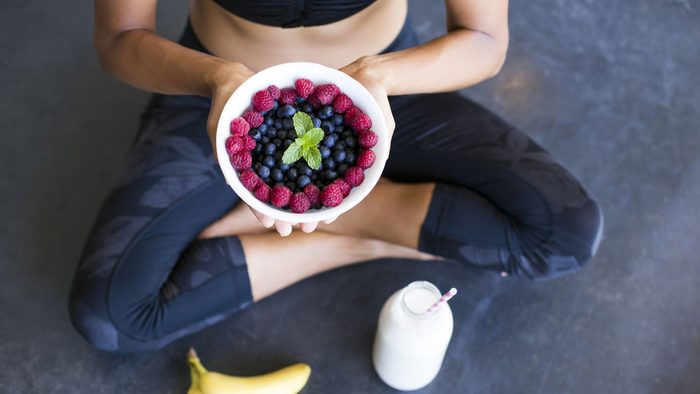
Foods for a healthier heart
Eating for a healthy heart is an almost inexhaustible topic, so wide-ranging and diverse that I can do little more than offer a few pointers here. Unfortunately, most advice for healthier eating includes going on some kind of a diet. But it should never be a crash diet, lasting a few days or weeks, since most are neither very helpful nor very healthy. An effective long-term solution involves a gradual and, more importantly, well-considered change in personal eating and drinking habits.
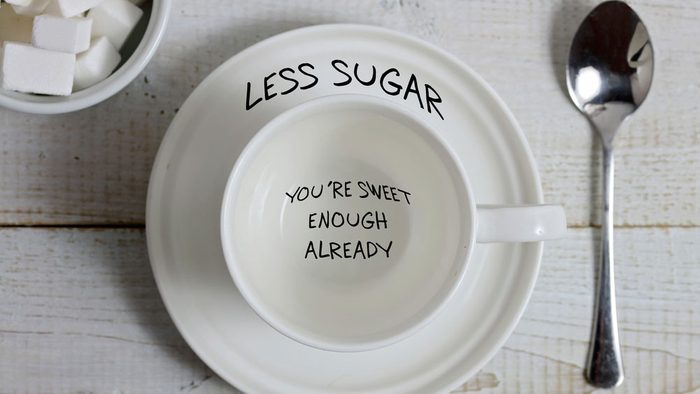
1) Reduce sugar intake
Those who want to be kind to their heart and body should take care to eat as little sugar as possible. That’s easier said than done, however, because sugar is like a drug to our bodies. It triggers the release of the ‘happiness hormone’ dopamine, which plays a vital part in our brain’s reward system. Just like a junkie looking for a fix, our body demands increasing amounts of sugar at ever-shorter intervals — preferably in the form of chocolate or other sweet treats — if we don’t keep it in check from the outset. We are the dealer and we have the power to decide: will our best customer get an apple or a cream cake today?
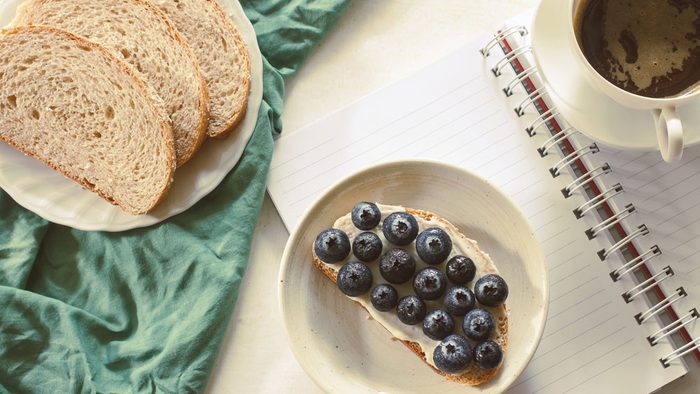
2) Swap white flour for whole wheat
Another way to reduce sugar intake is to cut down on food made with white flour. Unlike whole wheat flour, white flour contains next to no dietary fiber, and is made up almost exclusively of carbohydrates — so, basically, sugar. And we now know that this not only increases the risk of developing diabetes, but also is one of the main causes of deposits on the blood-vessel walls, and therefore also of cardiovascular disease.
The heart isn’t the only part of the body that’s negatively affected by white flour. Researchers have found that people who prefer white-flour foodstuffs and eat them often are more likely to suffer from eye diseases like macular degeneration. In this condition, the cells of the retina inside the eye gradually stop working. In addition, people who banish sugar and white flour from their diet suffer significantly less frequently from gallstones. I could go on listing the woes that are associated with white our, and the only possible conclusion is: replace white flour with whole wheat as much as possible!
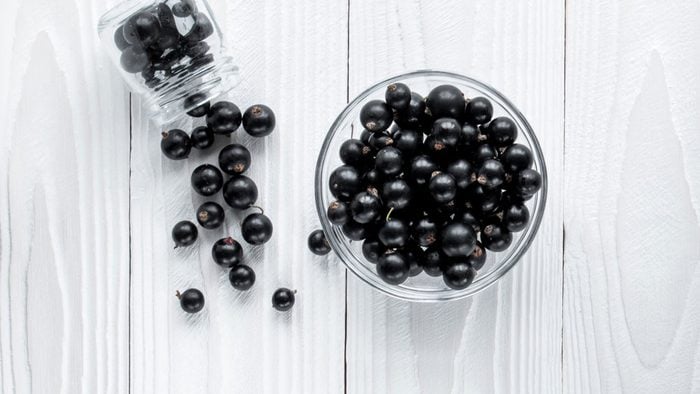
3) Eat more antioxidants
There’s one fruit — a berry, in fact — that is particularly close to my heart: Blackcurrant. They act as natural antioxidants, protecting our blood vessels from aggressive free radicals. Watermelon and honeydew melon should also feature regularly on the menu, as the substances they contain have been proven to reduce the risk of blood clots. Watermelon is also said to reduce high blood pressure. It also tastes and looks refreshing and delicious, don’t you think?
There’s a mushroom that has the same positive effect on the platelets of the blood, usually known as wood ear mushrooms. You can buy them in good supermarkets and Asian-food shops, often in dried form. Once they’ve been soaked in water, they can be used as an ingredient in spring rolls, soups, or stir fries, as they take on the flavors of the other ingredients very well. Incidentally, their name stems from the fact that they look like ears when growing on trees in the forest. Notwithstanding possible qualms about eating someone’s ears, this mushroom is an inherent and tasty part of Asian cuisine.
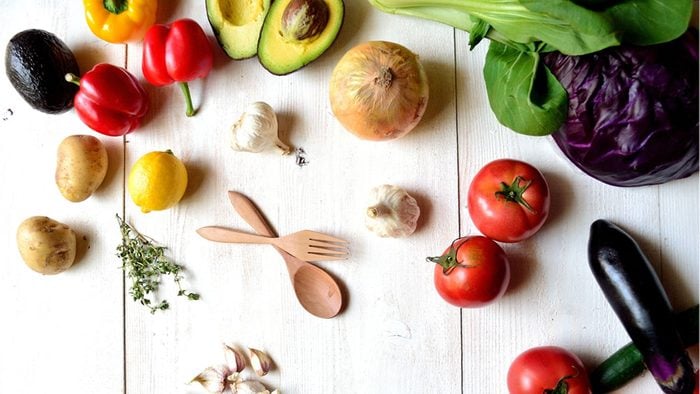
4) Eat your (colorful) vegetables
Vegetarian food often contains so-called phytochemicals. For instance, pomegranates contain blood-pressure-lowering polyphenols, garlic has sulphides which help prevent thromboses, pulses contain anti-inflammatory saponins, and almost all plants contain phytosterols, which reduce blood-cholesterol levels. If this sounds far too complicated, all you have to do is remember: tonight, it’s chickpea and pomegranate salad for dinner. Or bean stew with garlic.
Contrary to widely held beliefs, we don’t have to make any special effort to provide our bodies with enough vitamins and nutrients. All we have to do is what we enjoy doing anyway: mouth open, food in, a good chew, swallow — job done! Three portions of fruit or veg a day is a good guideline to follow, ideally including a range of fruit and vegetables of different colors. This is because it’s the phytochemicals in plants that determine their color.
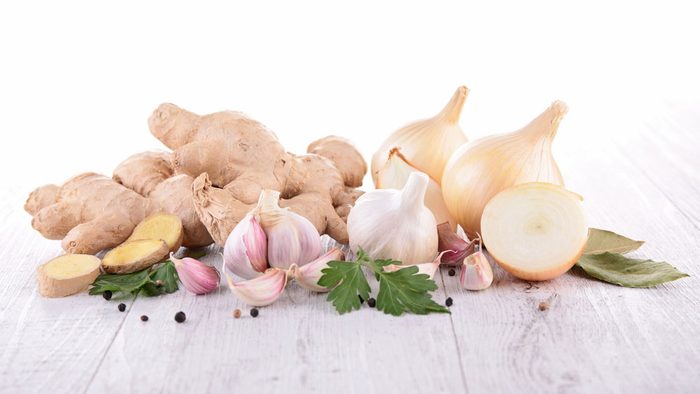
5) Enjoy ginger, garlic, and the humble onion
Both ginger and garlic help to thin the blood, which of course promotes blood flow through the vessels and improves the blood supply to our organs and tissues. A teaspoonful of grated root ginger in a glass of water is a quick and easy-to-make health drink. Similarly, garlic water, made with two to three teaspoons of grated garlic, will not only thin the blood, but will also have a positive effect on your cholesterol levels — if not on your social life! A useful and almost odor-free alternative is garlic pills, which will not give you bad breath.
And then there’s the real panacea: The humble onion. Its curative powers have been known since ancient times. Onions aren’t only tasty, they also help thin the blood, thereby reducing the risk of blood clots. And they have a beneficial effect on cholesterol metabolism and blood-sugar levels.
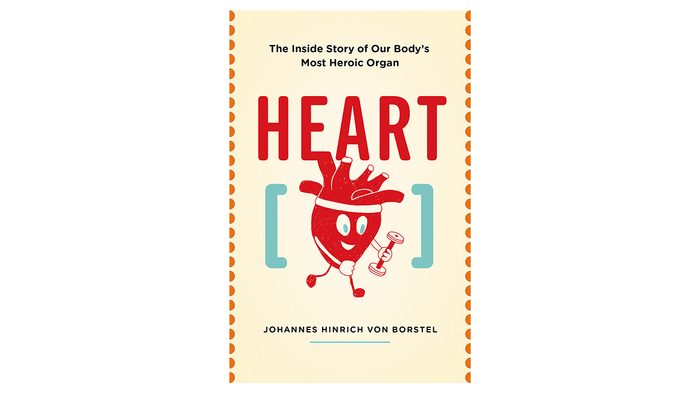
Choosing foods for a healthier heart
Once you have identified hidden sources of sugar, salt, and fats, it’s not so difficult to replace them with healthier yet still tasty foodstuffs, especially if you have the support of a professional dietitian or nutritionist. I’ll drink a melon shake to that!
Excerpted from Heart: The Inside Story of Our Body’s Most Heroic Organ by Johannes Hinrich von Borstel, published June 2017 by Greystone Books. Reproduced and adapted with permission from the publisher. $20 at amazon.ca.
